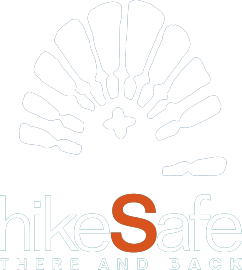Avalanche Safety
Avalanche Safety
Avalanches are very real and dangerous winter hazards. Education and training are critical, so everyone in your group should have a good knowledge of avalanche safety. A list of courses can be found here.
The essentials about avalanches:
- Most avalanches occur during or immediately after a snowstorm, heavy wind, or rain. However, unstable snow conditions can persist for several days after a storm. Steep slopes (25-50 degrees) and open snowfields with unstable deep snow hold a high risk of avalanche.
- Remember that avalanche danger rating levels are only general guidelines. Most avalanche accidents are caused by slab avalanches which are often triggered by the a hiker or a member of the hiker's party, so you should know how to evaluate terrain.
- Even small avalanches are dangerous.
- Check local avalanche conditions before you go. For Mount Washington, this can be done here.
- Never travel alone.
- Carry and know how to use avalanche rescue beacons, probes and shovels when your party is in avalanche terrain. You must be able to conduct a self-rescue if someone is buried, as time is critical. If you must go for help, it is generally considered too late.
- When in doubt, heed the warnings–-change of plans may be necessary.
The Avalanche Danger Scale
- Low (green): Natural avalanches unlikely. Human trigger avalanches unlikely. Travel is generally safe. Normal caution advised.
- Moderate (yellow): Natural avalanches unlikely. Human triggered avalanches possible. Use caution in steeper terrain on certain aspects.
- Considerable (orange): Natural avalanches possible. Human triggered avalanches probable. Be increasingly cautious in steeper terrain.
- High (red): Natural and human triggered avalanches likely. Travel in avalanche terrain is not recommended.
- Extreme (red with black border): Widespread natural or human triggered avalanches certain. Avoid travel in avalanche terrain. Confine travel to low angle terrain well away from avalanche path run-outs.
test your knowledge
are you prepared?
Answer four T/F questions to get your score.




